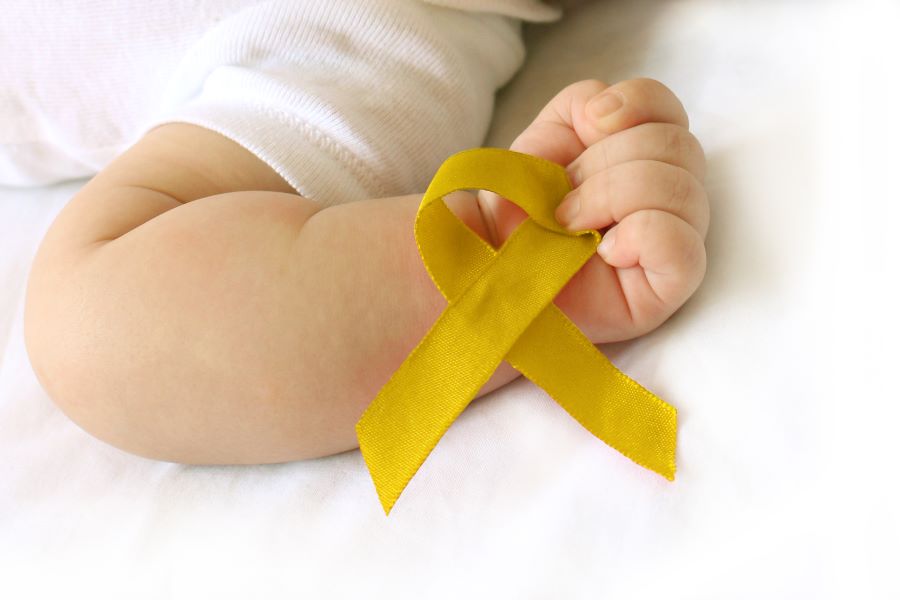Childhood Cancers


Childhood cancers are the leading cause of death among children ages 1-14 years old, and an estimated 1 in 10,000 children in the United States are diagnosed with cancer annually, according to the National Cancer Institute (NCI). Although some cancers in adults are attributed to lifestyle factors — such as lung cancer and smoking — childhood cancers do not typically have a known cause. However, certain genetic disorders, viruses at an early age, and ionizing radiation exposure have been linked with increasing a child’s risk factors for childhood cancers.
Leukemias are the most common childhood cancer type, representing an estimated one third of all diagnosed pediatric cancers. Leukemia is a cancer of the blood, affecting the body’s bone marrow that produces blood cells. The most common leukemia type is acute lymphoblastic leukemia (ALL), while the second-most common is acute myelogenous leukemia (AML).
Brain and central nervous system tumors, such as spinal cord tumors, account for 25 percent of childhood cancers, according to the American Cancer Society. Brain cancers are the most common types of solid tumors. Examples of childhood brain tumor types include gliomas and medulloblastomas.
Lymphomas are another common pediatric cancer type. These cancers affect the body’s lymph system, which is a part of the immune system. Lymphocytes begin to multiply uncontrollably, creating a tumor that most commonly affects the body’s lymph nodes, which are responsible for filtering infectious cells. The two chief lymphoma types are Hodgkin lymphoma and non-Hodgkin lymphoma. A doctor who specializes in evaluating tissues can view the cells to determine which lymphoma type a child may have.
- Less common childhood cancer types include:
- Bone cancers, such as Ewing sarcoma and osteosarcoma.
- Neuroblastoma, which typically occur in infancy or early childhood, and the symptoms often begin as abdominal swelling.
- Retinoblastoma, a cancer of the eye affecting the retina in the back portion of the eye.
- Rhabdomyosarcomas, which occur in cells found in skeletal muscles. Rhabdomyoscarcomas are the most common type of soft tissue sarcoma in children and account for 3 percent of childhood cancers.
- Wilms tumors, which occur in one or both kidneys. An estimated 5 percent of childhood cancers are Wilms’ tumors, according to the ACS.
The incidence of cancer diagnoses has increased from 1975 to 2004, from 11.5 cases per 100,000 children to 14.8 per 100,000, according to the NCI. However, both death and survival rates have improved since this time.
Sources:
- American Cancer Society
- What Are the Most Common Types of Childhood Cancer?
National Cancer Institute - Childhood Cancers.
National Cancer Institute - A Snapshot of Pediatric Cancers.
National Institutes of Health - Cancer in Children.
Nemours Foundation - Some Kinds of Cancer Kids Get.
Powered by Bundoo®












































